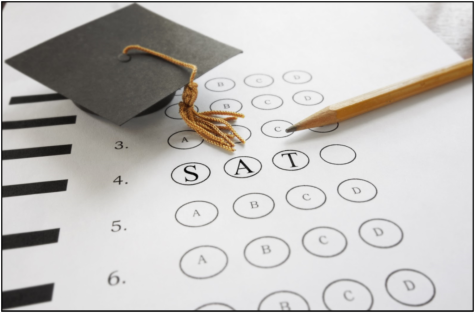A new and improved SAT coming 2024
March 23, 2022
On Tuesday, Jan. 25, the College Board released a statement with shocking information regarding the SAT (Scholastic Aptitude Test). As of now, the SATs are taken with pencil and paper and consist of five sections: writing, reading, math with a calculator, math without a calculator, and an optional essay. In total, the test was about hours and 50 minutes. However, starting in 2024, the SAT will become entirely virtual and subject to several changes that are intended to make the test easier for students. Some of these changes include reducing the test duration to two hours, quicker reported results, shorter reading passages and calculators being permitted for the entire math portion of the test. Students will be able to use their own devices, a school-provided device, or one provided by College Board while taking the test. The virtual alteration is not only going to make scoring easier, but College Board hopes it will also make the test much more secure and more resistant to cheating attempts.
These major changes attempt to improve the test-taking experience for future students, as well as for the schools administering them. In their recent statement, the College Board reported, “With changes that make the SAT shorter and easier to administer, states, districts, and schools will have more options for when, where, and how often they administer the SAT—rather than adhering to a fixed schedule.”
With a large push in recent years for the reconstruction of the SAT, many students feel these modifications are long overdue. When COVID struck and many colleges and universities turned to ¨test optional¨ applications, many students neglected to take the SAT at all. The College Board realized in order to reinstate the importance of this test, it would have to make some changes. The College Board claims they hope students will ¨want¨ to take the SAT, and instead of viewing it as a major stressor, they´ll see it as a way to ¨…demonstrate their strengths beyond what their high school grades may show. ¨ Essentially, the College Board hopes to create a newer, more positive stigma around the SATs.
The College Board has already had some students try out this new format. In its statement, the College Board referenced Natalia Cossio, a junior, as a source of feedback. “It felt a lot less stressful, and a whole lot quicker than I thought it’d be.¨ Cossio said in the press release, “The shorter passages helped me concentrate more on what the question wanted me to do. Plus, you don’t have to remember to bring a calculator or a pencil.” There were many other students and educators who participated in the trial runs of this new test, and almost all reported good feedback. If all goes accordingly, the SAT will no longer be such a dreaded, and anxiety-inducing aspect of college applications and will instead be a way to give students a leg up in their applications. Students will be excited to receive their scores, as opposed to dreading them. A 9th-grade student at Milford High School, Noelle Lang says, “I’m excited that these changes are going to make the test easier and will hopefully reduce some of the test anxiety I’m prone to, in turn producing better results.”
However, there is some opposition to the new format. Some students and educators are more in favor of the traditional ¨pencil-and-paper method.¨ Lang The news outlet Triton Times asked for the opinions of several students regarding their opinions on the upcoming changes to the SAT. Many of the concerns revolve around the virtual aspect, some are in favor of the online method, while others worried about the malfunctions that could come along with it.
In addition to that, some students worry that the shortened length of the tests means there will be more weight put on each question, leaving less room for errors. Lang shared some of these concerns as she stated, “I’m worried that colleges I’m interested in will now take the SAT less seriously and may impact how my application will appear to the colleges I apply to.”
It’s safe to say these changes elicited some mixed reactions of shock, excitement, and anxiety amongst upcoming SAT takers, as well as those who have already taken it. A senior at
Milford, Sydnie Uphoff said, “I wish I could’ve experienced these changes when I took the SAT, particularly the part about the shorter test length. It’s hard for me to concentrate for a long duration of time, particularly in the reading sections, I know most of my friends felt the same.”
Despite these potential drawbacks, students can hope for the best with this new and improved SAT format. Hopefully, the changes will predominantly benefit future students, as opposed to harming them.
